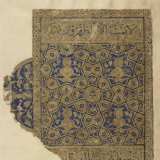History of surah The Victory

Name
Surat Al-Fath was given this name because it tells of the conquest that was granted to the Prophet -peace and blessings be upon him- and the Muslims after they were prevented from performing the rituals by the polytheists on the day of Hudaybiyyah.
Period of Revelation
Surah Al-Fath is one of the civil surahs. It was revealed to the Prophet - blessings and peace be upon him - on his way from Mecca to Medina and after his return from Hudaybiyah.
The reason for the revelation of Surat Al-Fath is the reconciliation of Al-Hudaybiyah, and the beginning of the matter was when the Prophet -peace and blessings be upon him- decided to perform the rituals of Umrah, so he went to Makkah Al-Mukarramah in the Ihram and drove the sacrificial animal with him, and when the Quraish learned of the Prophet's arrival, they prepared to fight him and sent their messenger to the Prophet, so he -peace and blessings be upon him- sent Othman bin Affan a messenger to them to show them that he came only as a forbidden one, to the Holy House of God, and that he did not want to fight, except that the Quraish held Othman bin Affan captive and the news reached the Muslims that he had been killed, so the Prophet called on the Muslims to swear allegiance to him to fight the enemies and be patient with him.
Then news reached the Prophet that Uthman had not been killed, and when the Quraysh learned of the pledge of allegiance and expressed intentions of reconciliation, they sent Suhail bin Amr to the Prophet -may God bless him and grant him peace- to offer him peace, and the Prophet agreed, and a treaty was made between the two parties, which became known as the Treaty of Hudaybiyah, and he showed great flexibility in completing this reconciliation, and therefore he ordered Ali ibn Abi Talib to write "In your name, O God" instead of "In the name of God, the Merciful, the Gracious" when Suhail bin Amr objected to it, just as he wrote "Muhammad bin Abdullah" instead of "Muhammad is the Messenger of God", and after the reconciliation was completed, the Prophet detached his ihram, shaved his head, slaughtered his offering, then left Al-Hudaybiyah, and Surat Al-Fath was revealed to him between Mecca and Medina.
Theme and topics
This Sura contained a series of objectives, which are as follows:
- The noble surah begins with the glad tidings of clear conquest and of what God has granted to His messenger and the believers in the form of a victory and clear support.
- The Surah contains the glad tidings of the believers about the good outcome of the Treaty of Hudaybiyah and that it was a victory and a conquest, so that tranquility entered the hearts of the Muslims and their grief prevented them from making the pilgrimage to the House.
- The statement that God Almighty sent his messenger Muhammad to people as a witness, glad tidings and warner so that faith in God and his messenger may be achieved and goodness and truth may prevail among people by obeying him and glorifying him.
- Considering the dignity of the Prophet, God's prayers and peace be upon him, with his Lord and his promise of another conquest to be followed by an even greater conquest, and the conquest of Mecca.
- A statement that those who swore allegiance to the Messenger, God's prayers and peace be upon him, and made a covenant with him to support him, and martyrdom for the sake of his reputation, that by doing so and by their pledge of allegiance to him, they have sworn allegiance to God and God's hand is over their hands with victory and support. God will give him a great reward.